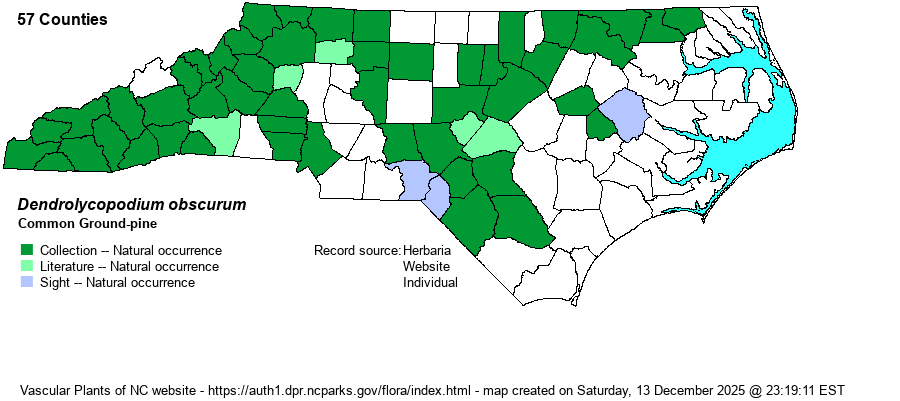| taxonName | relationship | relatedTaxonName | relatedTaxonRefText | relComments |
|---|
|
|
|
| Dendrolycopodium obscurum | = | Lycopodium obscurum | Flora of North America (1993b, 1997, 2000, 2002a, 2002b, 2003a, 2004b, 2005, 2006a, 2006b, 2006c, 2007a, 2009, 2010) | |
| Dendrolycopodium obscurum | = | Lycopodium obscurum | | |
| Dendrolycopodium obscurum | = | Lycopodium obscurum | Kartesz (1999) | |
| Dendrolycopodium obscurum | = | Lycopodium obscurum | | |
| Dendrolycopodium obscurum | = | Lycopodium obscurum var. obscurum | Fernald (1950) | |
| Dendrolycopodium obscurum | = | Lycopodium obscurum var. obscurum | Gleason (1952) | |
| Dendrolycopodium obscurum | = | Lycopodium obscurum var. obscurum | | |
| Dendrolycopodium obscurum | = | Lycopodium obscurum var. obscurum | Radford, Ahles, and Bell (1968) | |
| Dendrolycopodium obscurum | = | Lycopodium obscurum var. obscurum | Wofford (1989) | |
| Dendrolycopodium obscurum | = | Lycopodium obscurum var. obscurum | Flora of West Virginia | |
| Dendrolycopodium obscurum | < | Lycopodium obscurum | Gleason and Cronquist (1991) | |
| Dendrolycopodium obscurum | < | Lycopodium obscurum | Small (1933, 1938) | |
| Source: Weakley's Flora |

